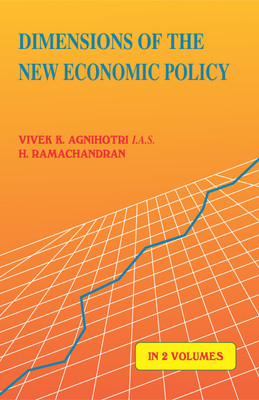Dimensions of the New Economic Policy (In 2 Volumes)(Hardcover, Vivek Kumar Agnihotri, H. Ramachandran)
Quick Overview
Product Price Comparison
It is ironical that in many parts of the world, there has been an unprecedented growth after Second World War which was accompanied by greater intervention and now for the same reasons of economic growth, a reduction in state intervention is advocated. Perceptible change in the economic policy of India was ushered in during the 1980s-albeit hesitantly-with a small degree of deregulation and decontrol.The debate on the nature of economic reforms and their impact is continuing since 1990 in India, and will continue. It is also apparent that some of the changes brought about are not reversible unless the circumstances become abnormal. The change in economic policy is also not a one shot strategy but needs to be supported by policy changes in various sectors of the economy as well as administration.It is necessary to emphasize that reforms in many sectors, particularly in terms of improving efficiency, cost reduction, cut in administrative delays need to be tackled irrespective of changes in the economic policy. At the cutting edge - the states and lower levels - there is an urgent need for reforms. Such reforms are not necessarily restricted to the economic sectors and economic policies but essentially include change in the administrative ethos and responsiveness.A Workshop on New Economic Policy was organised by Lal Bahadur Shastri National Academy of Administration, Mussoorie from 13th-15th April, 1994 to discuss the interface between the New Economic Policy and Public Administration. The Workshop was funded by the UNDP and sponsored by the Department of Personnel and Training. Government of India, New Delhi. Some of the papers presented and discussed in the Workshop are included in this volume while others are to be included in the second volume.


